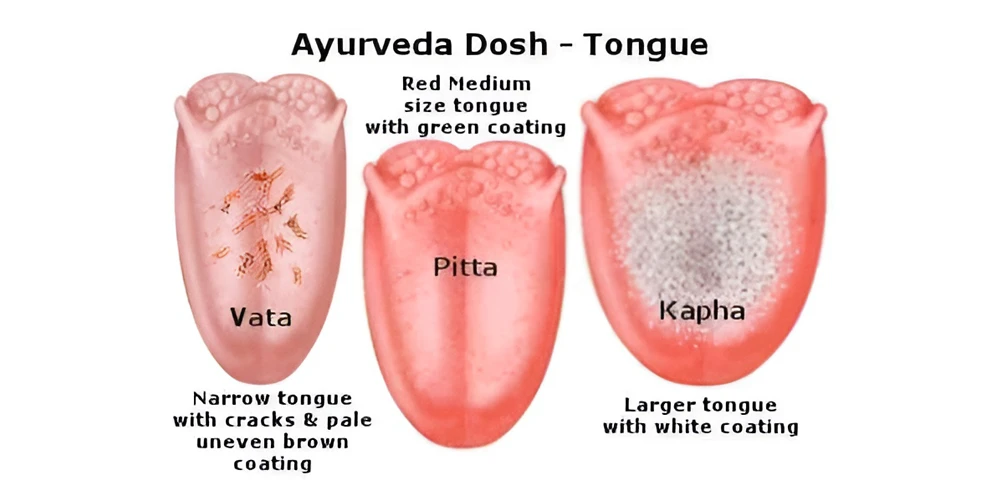Traditional Ayurvedic
Tongue Diagnosis
In Ayurveda, tongue diagnosis or evaluation of the tongue is one of the main investigative procedures used by practitioners to ascertain a patient’s health status.
The digestive tract begins at the tongue and extends for another 30 feet or so. Without invasive diagnostics, we are unable to see much past the mouth, thus a short examination of the tongue can reveal a lot about the condition and operation of your inner digestive system.
In fact, according to Ayurveda, the tongue’s surface depicts a complete map of the body, representing its general health.
Tongue Analysis
Examine each part of the tongue while staring in the mirror, looking for variations in:
- Colour
- Texture
- Coating
- Taste buds
The digestive tract’s inner lining is the primary determinant of general health, according to Ayurveda. The transport of nutrients, elimination of digested toxins, and initiation of the lymphatic and immune systems are all controlled by the inner skin’s epithelium. An Ayurvedic tongue diagnosis can offer useful insight into these functions.
Functions of Healthy Inner Digestive Skin
- Contains trillions of good microorganisms
- Where 80% of the immune system is located Where 95% of the serotonin for mood health is derived
- A safeguard to keep out contaminants from the environment
- The provision of all nutrients, minerals, and vitamins
- Controls changes to the human genome’s genetic and epigenetic makeup.
- Lymphatic circulation begins
- The primary force behind detoxification
- Creates conditions for the production of hormones, vitamins, and neurotransmitters
Of fact, the reasons why inner digestive skin health is so crucial are really few. We cannot see the inner skin, so how can we diagnose it—or can we?
You can get immediate and helpful information about the state of your digestion from your tongue.
The Perfect Tongue
Be aware that everyone will have a tongue that closely resembles their major constitution before discussing the “perfect” tongue constitutionally.

Tongue by Dosha
- Vata Dosha
The tongue will typically be a little bit scratchy and dry, thinner, and smaller.
- Pitta Dosha
The tongue will be medium in size, slightly dry, and significantly redder in colour.
- Kapha Dosha
Larger, fuller, possibly light pink, and slightly moist, the tongue will be.
Signs of a Healthy Tongue
- Pink: not pale, crimson, or red.
- The entire tongue has the same shade of pinkish colour.
- On the entire top surface of the tongue, tiny, cylindrical taste buds would be visible.
- Neither it is wet, nor it is overly dry. It’s perfect—moist!
- No cracks.
- Mucus that is very thin and white.
- There are no glassy or teeth marks on the sides.
Tongue Diagnosis: Looking For Imbalances
You have intestinal villi and delicate epithelium inside of your stomach and intestines, and the upper digestion is lined with a thin layer of mucus. This coating aids in the degradation of contaminants and the assimilation of nutrients. The traditional method of assessing one’s health was by looking at their tongue. Every doctor’s appointment began with a tongue depressor saying ahhh when we were children.
Excess mucus is produced by the intestines when they are inflamed or unbalanced, which slows down the villi and impairs their capacity to detoxify waste and absorb nutrients. The tongue would either become excessively red or moist and mucusy in this situation.
The villi dry out and stop functioning if the intestines are excessively dry, which can happen when there is too much stress or dehydration, which causes the tongue to become parched, dry, and even pale or cracked.



